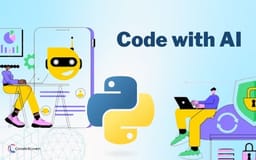What Is Artificial Intelligence For Kids? Learn AI for Kids
Artificial Intelligence, or AI, is the technology that allows machines to exhibit human-like intelligence. For instance, an AI system may be able to recognize what’s in a picture (computer vision), chat with us like a friend (natural language processing), create beautiful images (generative AI), or solve complex math world problems that require logic.
AI is becoming an increasingly bigger part of our daily life and work. When you watch a movie on Netflix, AI helps recommend other shows you might like based on what you've already watched. Self-driving cars use AI to navigate the roads, avoid obstacles, and follow all the traffic signs. AI is also used in video games to control characters that seem smart, like opponents or teammates, making the game more exciting. In hospitals, AI helps doctors review x-rays and other medical images to assist with patient care.
Learning AI for kids is like unlocking a superpower for technology. It not only helps them understand one of the fastest growing areas of technology, but also opens up many potential opportunities.























